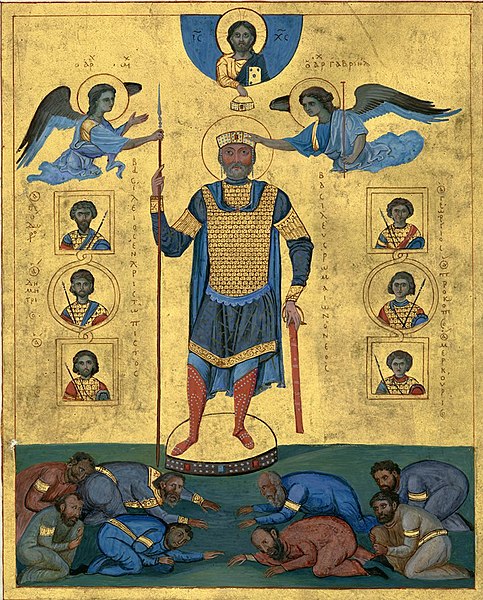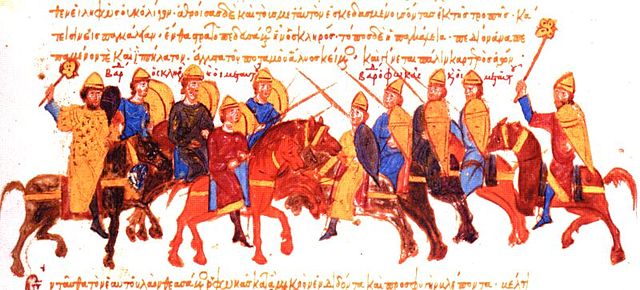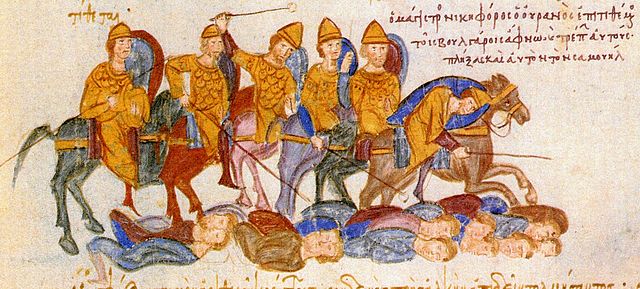The Battle of Apamea was fought on 19 July 998 between the forces of the Byzantine Empire and the Fatimid Caliphate. The battle was part of a series of military confrontations between the two powers over control of northern Syria and the Hamdanid emirate of Aleppo, which in turn were part of the larger series of regional conflicts known as the Arab–Byzantine wars. The Byzantine regional commander, Damian Dalassenos, had been besieging Apamea, until the arrival of the Fatimid relief army from Damascus, under Jaysh ibn Samsama. In the subsequent battle, the Byzantines were initially victorious, but a lone Kurdish rider managed to kill Dalassenos, throwing the Byzantine army into panic. The fleeing Byzantines were then pursued, with much loss of life, by the Fatimid troops. This defeat forced the Byzantine emperor Basil II to personally campaign in the region the next year, and was followed in 1001 by the conclusion of a ten-year truce between the two states.
View of Apamea's ruins
Basil II Porphyrogenitus, nicknamed the Bulgar Slayer, was the senior Byzantine emperor from 976 to 1025. He and his brother Constantine VIII were crowned before their father Romanos II died in 963, but they were too young to rule. The throne thus went to two generals, Nikephoros Phokas and John Tzimiskes before Basil became senior emperor, though his influential great-uncle Basil Lekapenos remained as the de facto ruler until 985. His reign of 49 years and 11 months was the longest of any Roman emperor.
Replicated depiction of Basil II from his Menologion, National Historical Museum
Clash between the armies of Bardas Skleros and Bardas Phokas at Pankaleia, miniature from the Madrid Skylitzes.
The Armenian prince Gregory Taronites is ambushed by the Bulgarians near Thessalonica.
Byzantine victory over the Bulgarians at the Battle of Kleidion, from the Madrid Skylitzes





